 |
2025 |
 |
2024 |
 |
2023 |
 |
2022 |
 |
2021 |
 |
2020 |
 |
2019 |
 |
2018 |
 |
2017 |
 |
2016 |
 |
2015 |
 |
2014 |
|
|
Viva Venice! Choir on Tour
1 June 2017
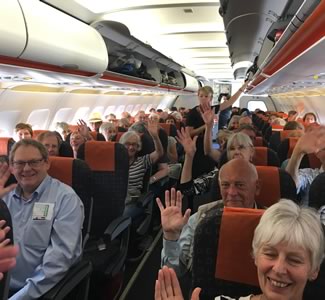
On our Flight from Luton
|
|
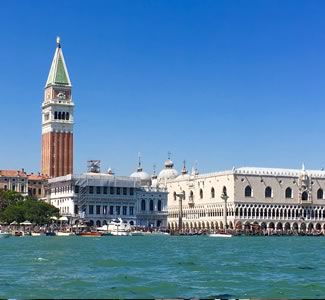
Travelling to St Mark's by Private Boat
|
Over five days last week more than seventy members of the choir
visited Venice to sing a Mass at St Mark’s Basilica for Ascension
Day, and also spent a day in Padua giving a concert performance in
the sumptuous acoustic of the tenth-century church of St Nicolò. At
both events they sang four unaccompanied motets - two by
British/Irish composers, and two by Venetian-school composers.
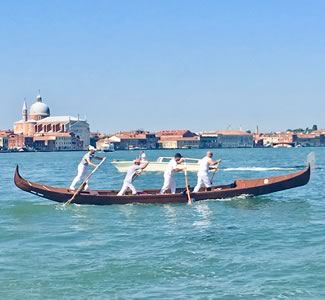
Getting ready for the Marriage of the Sea
|
|
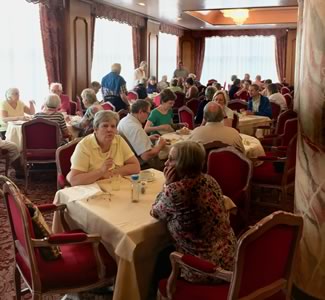
Breakfast at the Hotel
|
In the concert in Padua the choir additionally performed Gabriel
Fauré’s Requiem, a work the choir has recently recorded, and
will launch in a concert performance on Saturday 8 July. The first
motet - God is gone up by Arthur Hutchings (1906-89) was a
relatively simple affair for the choir (even in the elevated key of
C major), but the second O Rex gloriæ by Andrea Gabrieli
(1532-85) was in a polyphonic style not often encountered by the
large choral society, and stretched us into five parts. The third
motet - Cœlos ascendit hodie by Sir Charles Villiers Stanford
(1852-1924) was already known to the choir from their performance of
it at the Mass at the Vatican in 2011, and so the double-choir
eight-part writing was not a particular challenge. The same couldn’t
be said of the final motet - Buccinate in Neomenia tuba by
Giovanni Croce (1557-1609) where the double-choir, eight-part
writing was much more challenging, especially in its quick
syncopations and polyrhythms. Nevertheless, even in the huge
acoustics of St Mark’s Basilica the dancing sound world came across.
We were delighted to receive a round of applause from the
congregation as we concluded our participation in the Mass, and
Canons Camilotto and Barlese praised the choir for their singing,
and invited us back to sing again.

After our Concert in Padua
|
|
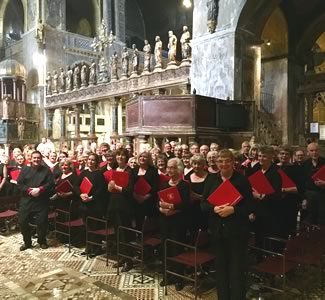
Before Mass at St Mark's
|
Gabriel Fauré’s (1877-1962) Requiem was far less of a
challenge, though the large number of singers in the choir meant
that we had to stand at the back of the church of St Nicolò in order
to balance with the organ (situated in a gallery at the back of the
church) and to allow sightlines with our wonderful organist Alvise
Pellegrini, who lives and works in the UK (and regularly accompanies
the choir at Olney where our MD is also Director of Music), but who
hails from Padua, and was able to secure the opportunity to sing in
this fine church. Alison Barnes and Michael Waterfield sang the
soprano and baritone solos with style and aplomb, and we received
generous and hearty applause from the audience.
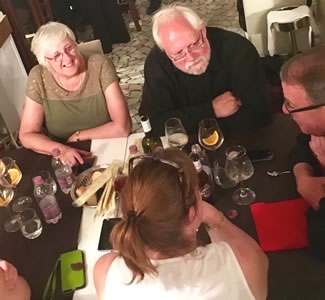
Our Communial Meal
|
|
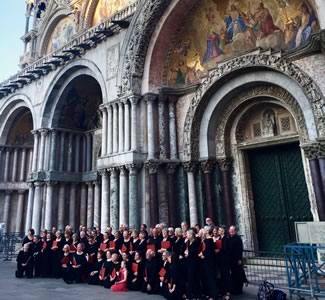
After Mass at St Mark's
|
As well as our musical performances, there was plenty of “tourist
time” for us; our hotel was in Mestre - a 15 minute journey by Bus
or Tram from Venice - and supplied us with superb breakfasts and a
communal first evening meal upon our arrival. Some of us even caught
a glimpse of the special Marriage of the Sea ceremony which took
place on Ascension when the Mayor of Venice has for two-hundred
years (and the Doge of Venice for eight-hundred years before that)
has symbolically cast a ring, consecrated by the Patriarch of
Venice, into the sea, and with the words "Desponsamus te, mare,
in signum veri perpetuique domini" ("We wed thee, sea, as a sign
of true and everlasting domination") declared Venice and the sea to
be indissolubly one.

The Doge's Palace
|
|